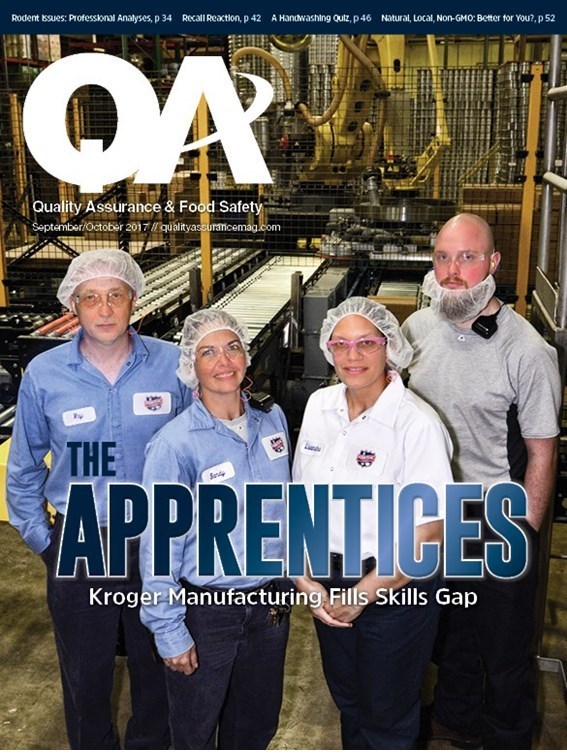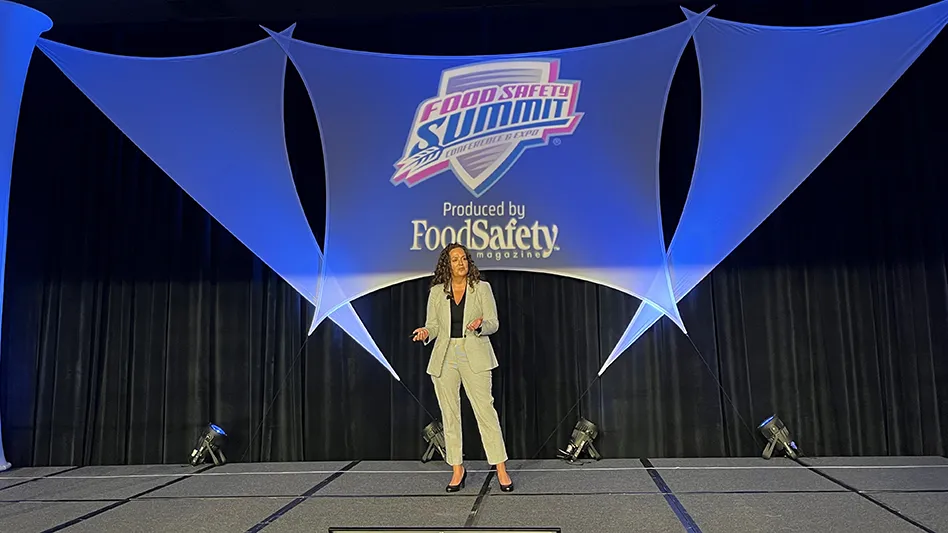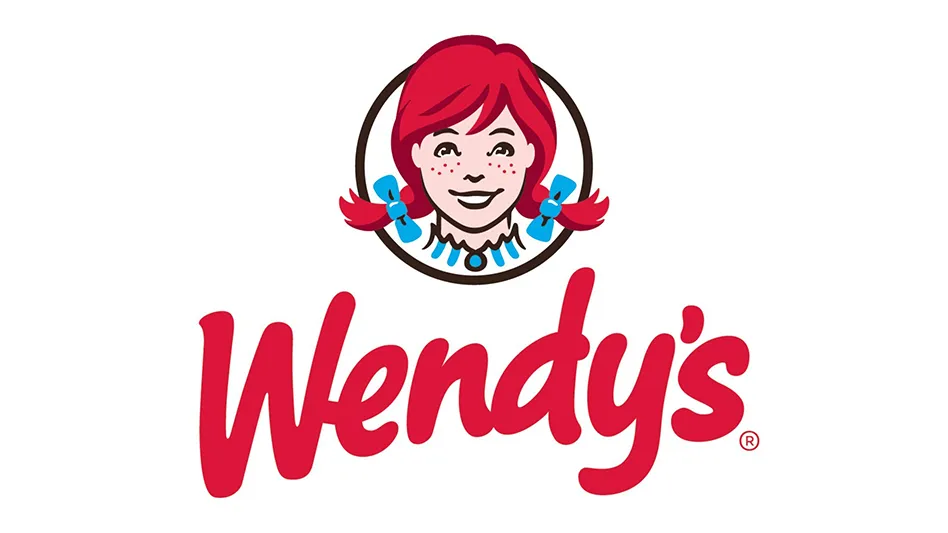
By Lisa Lupo
Natural vs. processed. Local vs. big business. GMO vs. non-GMO. No matter which side you stand on in these controversial topics, you can find data to back up your beliefs. That is one of the reasons that the “better for you” debates continue and regulatory agencies are being called on to write definitions and set standards. As a reader stated in response to a previous QA article on the topic, “Can the subject be discussed without bias? I doubt it — so what’s one to do? Go with the gut.” Let’s look at some of the discussion:
NATURAL. This is, perhaps, the most difficult issue to discuss or take a stand, as there is no consistent definition of natural and labeling regulation is very limited. But in response to consumer requests, including four Citizen Petitions, FDA is working on defining natural, having asked for public input on the use of the term on food labels.
Until that is set, one can only go with FDA’s current policy on the use of natural on a food label: “From a food science perspective, it is difficult to define a food product that is ‘natural’ because the food has probably been processed and is no longer the product of the earth. That said, FDA has not developed a definition for use of the term natural or its derivatives. However, the agency has not objected to the use of the term if the food does not contain added color, artificial flavors, or synthetic substances.”
Thus, by its definition, natural and processed are not mutually exclusive; bagged fresh vegetables, roasted peanuts, and coffee beans are all considered to be processed fruits but nothing “unnatural” has been added. On the other hand, there are many processed products (e.g., granola bars to ice cream to pet food) that are validly labeled as “all-natural,” because they fit the current FDA standard. This is because the policy does not address food production, processing, or manufacturing methods.
And yet, that is not understood by many who are choosing natural foods for their perceived benefits. In fact, an article in Millennial magazine states, “One of the great benefits of eating natural foods is that natural foods are generally not processed foods.” The article goes on to say that natural foods generally have more fiber and are lower in calories, yet the current definition (“does not contain added color, artificial flavors, or synthetic substances”) addresses none of these, nor even the fact that there are any “Health Benefits of Eating Natural Foods” as the headline claims.
And that, in and of itself, brings up a similar conundrum: What is healthy? FDA also started a public process to redefine the “healthy” nutrient-content claim on food labeling for which it solicited public input. Over the years, public health and nutrient recommendations have evolved, as reflected in both 2015-2020 Dietary Guidelines for Americans and the updated Nutrition Facts label, causing divergence in the use of the term on food labels.
What makes this conversation even more interesting, however, is the food industry’s related action and re-action, such as that of General Mills in its cereal production. In response to consumer requests, the company had removed artificial colors and flavors from its Trix cereal. Now, because “Trix fans have been calling us, e-mailing us and reaching out to us on social media asking if we would consider bringing back the original formulation of Trix cereal with its vibrant colors,” General Mills is bringing back the classic formula. As stated in a Minneapolis Star Tribune article, “It turns out some Trix eaters prefer artificial colors and flavors.”
LOCAL. “Buy local” is not just a consumer group slogan, it has become an all-out “movement.” While its general meaning is fairly evident (i.e., purchasing goods, in this case food, produced in the local area), less clear is exactly how far the “local area” extends and what constitutes “production.” Is jam considered local if it is made and sold by a community family if the peaches were grown in another state and sugar purchased from the grocery store? Are tomatoes grown by a farmer in your county, but sold in a chain grocery store local? Is the common definition of “food grown within 100 miles of its point of purchase or consumption” accurate? What if the 100 miles crosses state lines? What if it is produced by a multi-national corporation within 100 miles?
Not only is there no consensus as to what distance constitutes local or how much of the product must be made from local ingredients, there is no current governance over use of the phrase. Northeastern University Graduate Student Jennifer Krajewski discusses this in her paper, “False Locally Grown & Locally Sourced Claims at Restaurants”, citing Times’ Food Critic, Laura Reiley, “just about every restaurant fibs when it comes to locally grown and locally sourced claims — some were tiny fibs, while others were huge.”
Discussing the jurisdictions of such federal agencies as FTC, FDA and USDA, Krajewski states, “With clear responsibilities in place, it seems that one of these agencies should be cracking down on these false local food claims, but the problem is that there is no federal definition and the possibility of one is unlikely. There is concern that because of the diversity of crops and growing regions within the U.S., which makes a set distance reasonable for some states, but not others.”
GENETICALLY MODIFIED. When one discusses food controversies, it is that of GMOs which is probably the most highly and hotly contested today. Called variously genetically modified (GM) foods or foods derived from genetically engineered (GE) plants or genetically modified organisms (GMOs), to some the term, in any form, means unnatural, unhealthy, and/or downright dangerous.
But, like natural and local, there is really no simple, unilateral definition for GMO that addresses the characteristics that are of concern to consumers, primarily because there is no simple, unilateral definition that fits every form or use of the term.
In current guidance, FDA uses the terms genetic engineering and bioengineering to describe the use of modern biotechnology, stating, “Modern biotechnology means the application of in vitro nucleic acid techniques, including recombinant deoxyribonucleic acid (DNA) and direct injection of nucleic acid into cells or organelles, or fusion of cells beyond the taxonomic family, that overcome natural physiological reproductive or recombinant barriers and that are not techniques used in traditional breeding and selection of plants.”
While that may be a very applicable definition, it does little to explain the impact of such application on the foods we eat. It is for such reasons, as well as consumer demand and avoidance of a “patchwork” of state laws, that a federal law was passed in July 2016 mandating that USDA develop regulation for GMO labeling and determine which foods are considered GM/GE/GMO subject to the labeling requirement. USDA has two years from the date of enactment to develop the standard.
There is some controversy to the law and its mandatory labeling, however. As Northeastern Graduate Student Thomas Shaw states in his Ethical Dilemma Analysis Paper on GMOs, “The White House does fear that requiring the labels will make people think that GMO foods are not safe for consumption.” On the other hand, he notes, “Not labeling GMO for some is considered a form of food fraud.” This is because unless consumers are educated on GMOs and told if a food they purchase is derived from GM/GE ingredients, there is no way for them to make an informed choice.
As such, Shaw’s study is intended to highlight and increase awareness of three topics: labels for GMO products have not always been required in the U.S.; there has not been enough time passed or studies concluded on GMO consumption to know if there are any long-term effects; and consumers should be able to make an educated decision to purchase GMO or non-GMO products.
BETTER FOR YOU? So, are natural, local, or non-GMO foods better for you? It depends not only the producers’ and retailers’ applications of the terms, but on your source of information, your values, your health situation ... and your definition of better.
The author is Editor of QA magazine. She can be reached at llupo@gie.net.

Explore the October 2017 Issue
Check out more from this issue and find you next story to read.
Latest from Quality Assurance & Food Safety
- FDA Issues Update on Post-Market Assessment of Tara Flour
- ASI Announces Training Partnership with Rootwurks
- Nfinite Nanotech Closes $6.5 Million Seed Financing to Create Flexible Food Packaging with Nanotechnology
- University of Pretoria Food Science Student Wins IFT and PepsiCo’s Academic and Travel Undergraduate Hybrid Scholarship
- Kraft Natural Cheese and Shawn Johnson East Celebrate Launch of Kraft Signature Shreds
- Natural Sourcing International Announces Voluntary Recall of Black Chia Seeds
- PTNPA's DC Fly-In Connects Members with Policymakers
- Breck Partners Acquires NPX One





